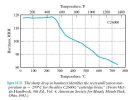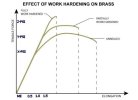I emailed the fella last night
Asked if I could prepay and get a confirmation when it was sent.
He responded very quickly and assured me he would, he is waiting on the salts.
I'm ordering very soon. Gotta get moved first.
I will keep my Anneal Ease for doomsday no power situations
Asked if I could prepay and get a confirmation when it was sent.
He responded very quickly and assured me he would, he is waiting on the salts.
I'm ordering very soon. Gotta get moved first.
I will keep my Anneal Ease for doomsday no power situations




